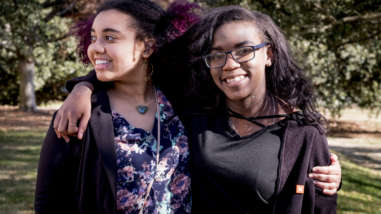Kim Hamilton is senior advisor to the Family Planning team at the Bill & Melinda Gates Foundation. This piece is cross-posted from the Gates Foundation’s Impatient Optimists blog -Ed.
When the Bill & Melinda Gates Foundation joined the William and Flora Hewlett Foundation to create the Quality Education in Developing Countries (QEDC) initiative, we did so knowing that education is an asset in its own right and is also one of the primary determinants of better health outcomes. Yet, at a time when many countries were making progress to improve access to education, skills like reading, numeracy and critical thinking were not keeping pace for girls and boys—even where access was nearly universal.
We believed that a time-bound push to advance a quality education agenda could improve the lives of children in their transition to adulthood and beyond. Eight years later, with the next round of Sustainable Development Goals under intense negotiation, the development field is much better prepared to marry access to education with quality and equity, laying a foundation for a healthier future. Indeed, with nearly $130 million invested across more than 150 grants, QEDC grantees have created a game-changing, learning-focused environment for children.
So what happened to create such a rapid transformation within a decade?
QEDC grantees successfully tackled three key problems that were fueling the crisis in learning in countries as diverse as Senegal, India, Kenya, Uganda, Tanzania, Ghana and Mali. These problems included:
1. Sparse attention to and feeble accountability for learning;
2. An absence of teaching models that actually worked, and
3. Insufficient resources dedicated to learning as an outcome.
Together, they demonstrated that low-cost, citizen-led, household learning assessments of reading and math could both define and measure the dimensions of the learning crisis and make the failure to learn an inescapable reality for governments, donors, and communities. Evidence amassed through a series of evaluations, in a field where much more research is needed, suggests that teachers need support and mentoring, students need instruction in a language they can understand and at a level they can grasp, and that communities need to be engaged as partners in change. With the SDGs moving toward a goal that includes “inclusive and equitable quality education”, there will be ample opportunity to put these learnings into action.
What’s next for this effort?
The QEDC partnership is an example of philanthropy at its best, tackling a neglected topic and a defined set of problems, and leaving the field stronger than when we began this shared journey. The William & Flora Hewlett Foundation has charted the next step in the evolution of this work, which will focus on the application of accountability and transparency tools to improve learning outcomes. Expect to see more citizen-led efforts to advance this work. You can read more about the second phase of this work here and find resources and the evaluation results for the effort here. For true inspiration, this video highlights the experience of our grantees and leaves no doubt that children will learn if given the chance, even in the most challenging environments.


